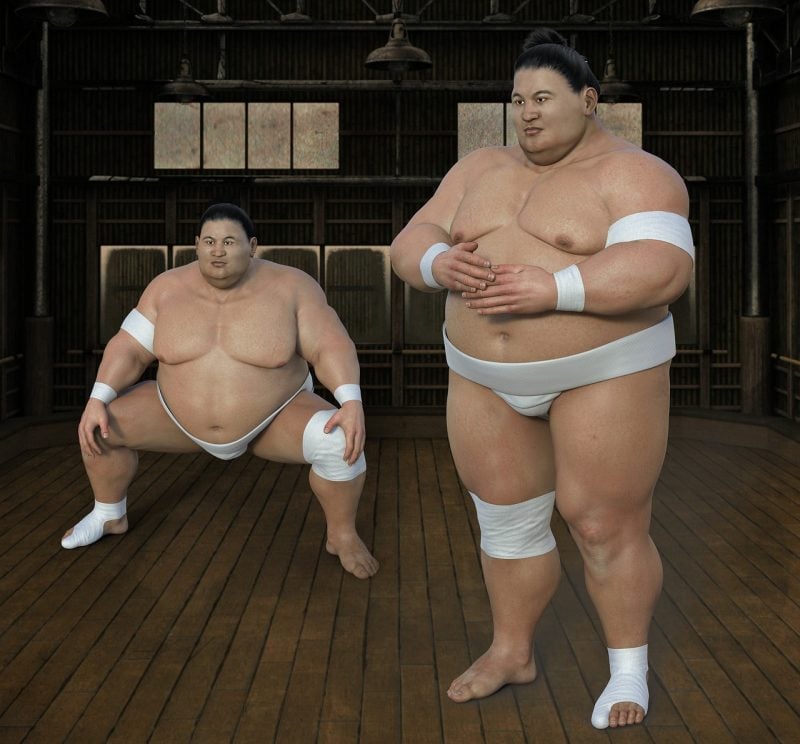Do you know what sumo means? What is the origin and history of sumo? How does Japan face this sport and its curiosities? In this article, we are going to see a complete guide to sumo, one of the most important and traditional sports in Japan.
Surely you've seen in some media, this ancient martial art, practiced by few. Sumo is a sport originating in Japan, being the only country that practices and supports it professionally. This sport is so important that some awards are given by the Prime Minister of Japan.
Some rules and rituals are established, but basically the sport is pretty simple. It consists of a fighter trying to force the other out of the ring or make him touch the ring with any part of the body. Initially it was a sport enjoyed by powerful and wealthy people, but it became popular among all social classes.
Table of Content
ORIGIN AND HISTORY OF sumo
In romanized Japanese, it is written as sumou [相撲] where the ideogram [相] means together and [撲] means to hit, which can be literally translated as to hit each other.
Sumo wrestlers are called rikishi [力士] which literally means strong or powerful man. It is interesting to highlight the ideogram [士] which also refers to a warrior or samurai.
Artes marciais Similar activities have been reported and practiced in many parts of the world for a long time. In Japan, the sport was already mentioned in Japanese historical books written in the 8th century.

It is reported that at the time of planting rice, sumo was present. Juice sessions were held as a form of prayer for a good harvest. In other periods the sumo became an event of the imperial court.
But much of what we see in the sumo today is due to Shintoism. Juice was often performed in rituals and festivals, with the aim of entertaining the gods. One legend says that these fights were originally practiced by the gods themselves.
THE RITUAL AND TIME OF A sumo wrestling
Many wonder how long a sumo match lasts. First, we need to understand a little about the rituals that take place before fights. These rituals were adopted in the 17th century.

Before the fight, there is a ritual between the 2 players that consists of drinking sacred water and throwing salt in the ring before the fight. When entering the ring, the fighters stamp their feet to scare away the demons and clap their hands to summon the gods.
Even the sand that covers the dohyo symbolizes purity in Shintoism. Those watching these fights do not leave their places until the entire ritual is completed. The referee also dresses like a Shinto priest.
The ritual lasts longer than the fight itself. The fight is simple and quick, usually lasting no more than 30 seconds. The objective of the contest is to force the opponent out of the dohyo or make them touch the ground with any part except the soles of their feet.
facts about sumo
Never leaving aside the traditions, sumo today is not just something religious. There are six major tournaments held annually, called hon-basho. To reach these tournaments, the fighters called rikishi undergo rigorous training. They go through a reinforced diet of 16,000 daily calories (what a normal person eats in a week).
Rules from having a good diet, daily exercise to even the haircut and clothes they wear in public. The association banned fighters from driving their own cars, because of some incidents. The "thong" they use in fights is called mawashi, and its color represents the fighter's region of origin.

The 6 basic divisions in sumo that dictate the power and hierarchy of the wrestler. The highest division being Makuuchi and the lowest being Jonokuchi. For a fighter to climb his ranking, he just has to win most of his attacks in the main tournaments. Fights are held in a single round and usually last a few seconds.
Another interesting fact is that there is no weight separation in sumo. This means that a wrestler can face another who weighs twice as much. There is not a good audience for the TV broadcasts, as, by tradition, it is aired between 16:00 and 18:00. It is during this time that most people are returning home or are at work.
There are many curiosity and even greater is the tradition of sport in Japan. But today there are few young people who want to dedicate themselves to the sumo lifestyle. Sports like football/soccer and baseball are much more popular.
Others blame the sport's casualties even on the video game trend. Yet sumo is still alive not only as part of Japan's tradition and religion, but also as a sport and a way of life.
It is obvious that Sumo is far beyond what is covered in the article. So you can expect to read more information about him on our website or in the recommended books below:
